Stephen Ruffin, the First Black Professor in the School of Aerospace Engineering
Highlighting Black Firsts in AE, Part 2
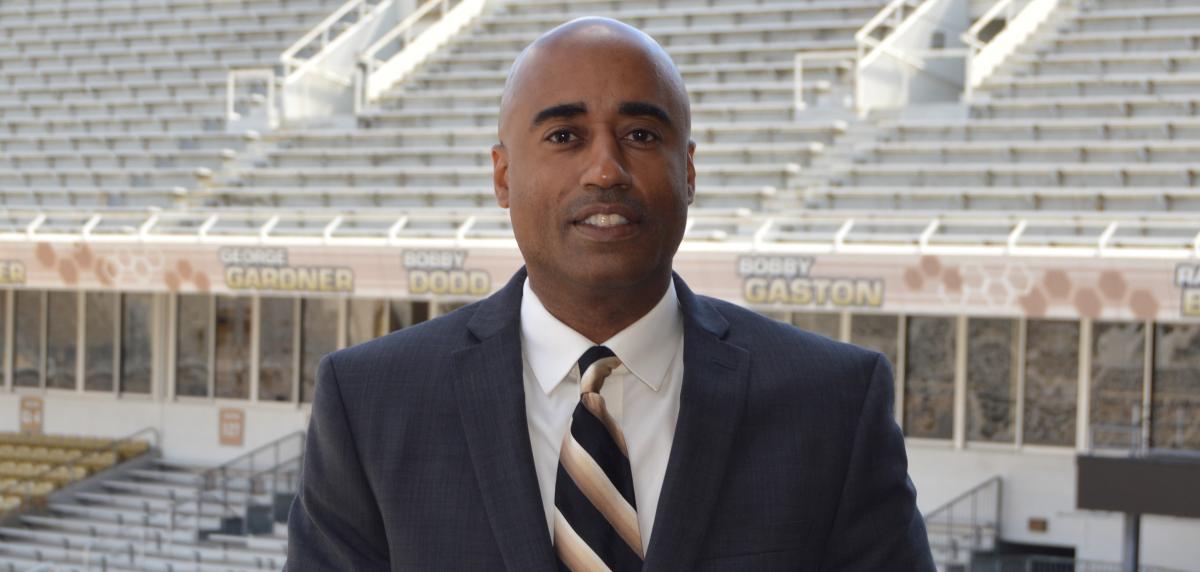
The Daniel Guggenheim School of Aerospace Engineering (AE) proudly salutes its first Black professor, Stephen M. Ruffin for his leadership, contribution to aerospace engineering, and service to the community. His legacy in AE is one of service and academic professionalism. He champions the cause of his students with high expectations for all.
“In his role at AE, Professor Ruffin continually pushes to enhance the quality of the undergraduate and graduate academic content and student experience. He has a passion for developing others,” said Mitchell Walker, John Young Chair and College of Engineering associate dean for academic affairs.
Stephen Ruffin walked across the threshold of Montgomery Knight in 1993 and got right to work. The young faculty specialized in high-temperature gas dynamics, compressible flow aerodynamics, and airframe propulsion integration. He excelled from the day he started to teach and conduct research. However, it wasn’t enough for him to focus on his research; he was on a mission to help the next generation to succeed. His hard work and dedication paid off, and he received tenure and earned the rank of full professor. In AE, he served as associate chair of graduate studies and associate chair for undergraduate studies while also Director of NASA’s Georgia Space Grant Consortium. He leads the Aerothermodynamics Research and Technology Laboratory (ARTLAB).
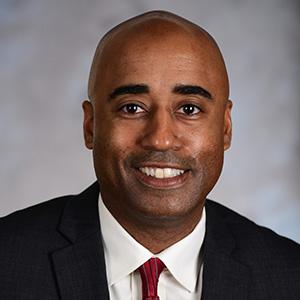
Stephen Ruffin
Associate Dean of Academic Affairs, Georgia Tech Professional Education
The Research
Ruffin is leading the development of a 3D Cartesian Grid-based Navier-Stokes solver (NASCART-GT) for design applications and the development of Cartesian-grid approaches for chemical reacting flows. ARTLAB applies these techniques to applications as diverse as hypersonic planetary entry vehicles and flow physics, rotorcraft airframe interaction flows, transonic and supersonic missiles, and unsteady store separation problems.
Groomed for Success
It all began in Baton Rouge, Louisiana, under the parentage of a chemistry professor and a physics professor. The Ruffin household was fertile ground for a future aerospace engineer with dinner discussions of science, college life, and student success. It didn’t hurt that he lived near an airport with airplanes flying 200 feet over his head about six or seven times a day. It sparked his interest in a big way. Watching the Apollo missions to the moon and other NASA missions furthered his fascination with aerospace. When he was twelve years old, he learned that his father was a Tuskegee Airman and navigator in World War II. After that, the path seemed to be revealing itself to him.
In high school, it only took a few weeks in the summer working at a fast-food chain cleaning chickens to make him think about what he wanted to do when he grew up. He knew what he did not want to do. Later that summer, he interned at Southern University and a year after that at Louisiana State University in a mechanical engineering program. He was also engaged in other science, technology, engineering and math (STEM) programs while in high school.
Regarding his work at LSU, he states: “We got to assemble and test a supersonic wind tunnel. The faculty lead took the time and care to get the class excited about engineering. It helped build my confidence. I got to help put it together, testing, taking pressure measurements, and flow visualization. It was very influential for me.”
Welcome to the Ivy League
Ruffin headed to Princeton University eager to excel but soon realized that his public high school hadn’t prepared him for the rigorous coursework. He had to work twice as hard and play catch-up in math. He was not alone in that position. He found himself for the first time working together with other students on homework and projects.
“The most important thing I learned at Princeton, outside of the academics, was the power of connection and the importance of a circle of friends and associates supportive of my learning. If I was stronger in one area, I could help someone and vice versa. I share this insight with my students as an educator, as well. Isolated students don’t fare as well academically or socially as their well-connected peers,” Ruffin shared.
He went on to earn his M.S. in Aeronautics and Astronautics from Massachusetts Institute of Technology (MIT) in 1987 and his Ph.D. from Stanford University in 1993.
In addition to his coursework, he served as an officer in the National Society of Black Engineers (NSBE) chapter and later served in the Black Graduate Student Association (BGSA) at MIT. He was awarded the NASA Superior Performance Award and the NASA National Aerospace Plane CFD Validation Team awards in 1992.
Purpose Driven Career
He’d been working at NASA Ames Research Center for six years as an aerospace engineer when he decided to come to Georgia Tech. The aerospace engineer wanted to be involved in education and service. Coming to Georgia Tech would give him an opportunity to do the research he loves while also educating students from all backgrounds. He felt a call to service.
In 1993, Georgia Tech checked all the boxes for the new educator. He wanted a very strong engineering research program, an environment where he could make a difference, and an institution committed to opportunities for all students.
“When I talked to professors and the dean at the time, they placed a value on advancing diversity, and I liked that then, and I like that now.”
When he applied for this new position, he didn’t know he would be the only Black professor in aerospace engineering. So, he appreciated that when he came to campus, Tech connected him with other Black professors across campus to create a community.
“I was never in an engineering classroom with a Black professor until I was the one teaching at Georgia Tech.”
Connecting with peers was important to his success, but finding senior collaborators proved more of a challenge in the early years. Ruffin was grateful to Professor Sankar in the Rotorcraft Center for Excellence and a few others for their continued mentorship. One of the hurdles for him and many new professors is acquiring faculty mentorship. Getting promotions and tenure without the right collaborations is very difficult. Ruffin has seen this improve over his time at Tech regarding how it onboards new faculty and gets them oriented at the Institute-level. He has tried to promote this in AE as well.
“We have to establish structures and processes to foster these collaborations. But, in many ways, we know what’s needed for professional success.”
(text and background only visible when logged in)
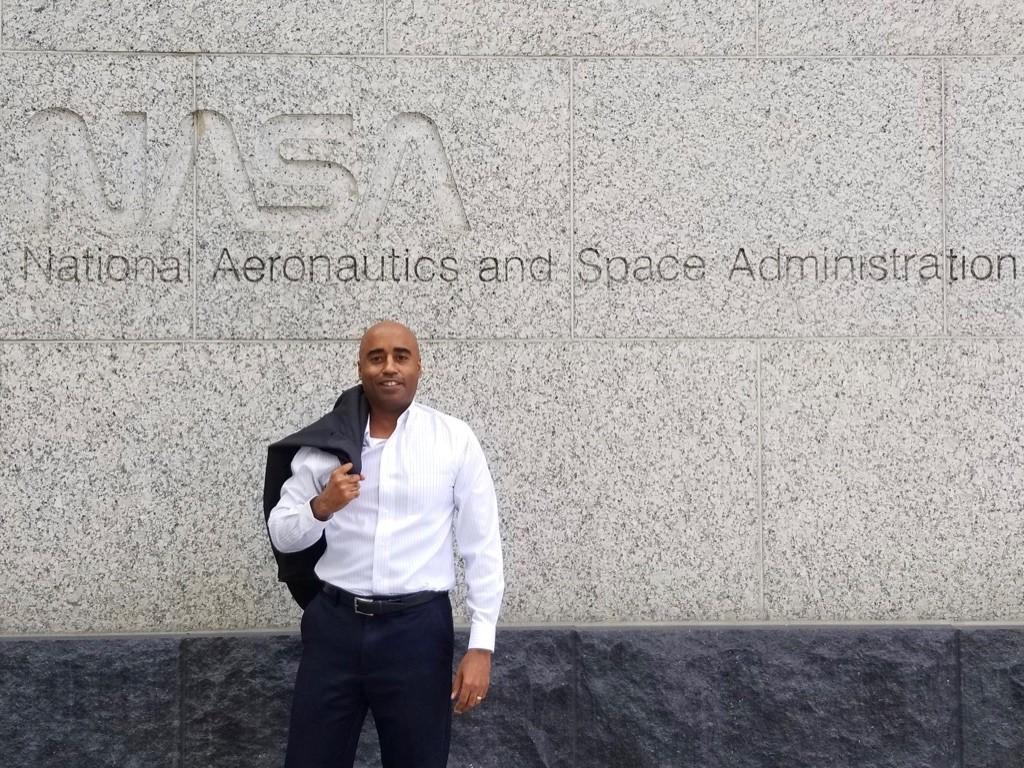
Ruffin outside NASA Headquarters in Washington DC on a visit to manage education and research programs
(text and background only visible when logged in)
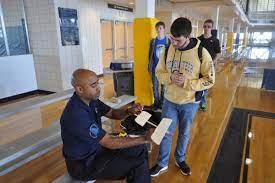
Ruffin instructs AE student
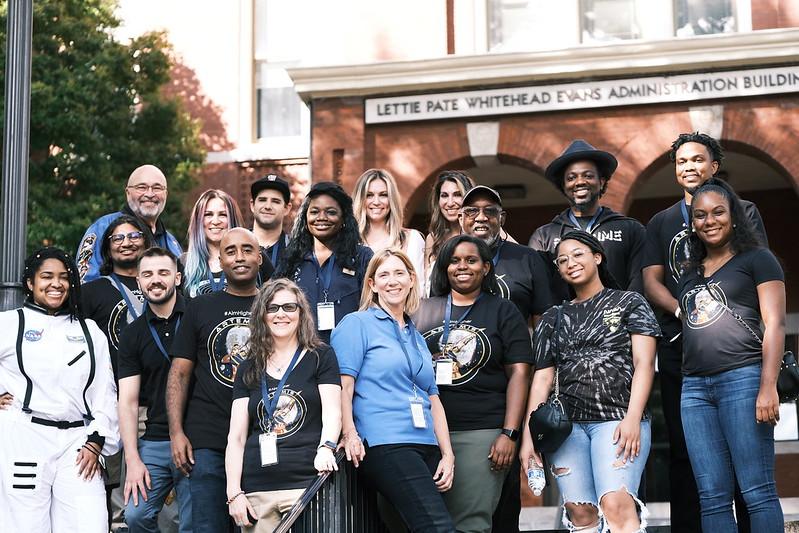
2021 Space Grant Consortium on Georgia Tech's campus
Serving the Community
Fully committed to Georgia Tech’s mission of progress and service, Ruffin rolled up his sleeves and got involved in several institute-wide efforts promoting community engagement. Ultimately, his passion for helping students led him to head up the Georgia Space Grant Consortium located on Georgia Tech’s campus. He is also a former two-term chair of NASA’s National Council of Space Grant Directors.
“We work with school systems and others to be visible, improve curricula, and make STEM more exciting and relevant to students. Not everyone grew up in a family environment as I did. So, they may not see others working in STEM and all of the different things they can do in the field. We’re providing exposure to students who may ultimately be world leaders. We try to advance what this nation needs, a more educated workforce that can compete. We aim to reduce some of the disparities that exist in educational systems. All of that is important to me.”
As associate chair, Ruffin worked hard to create a place where students were academically challenged and supported to excel.
“I owe a lot to Dr. Ruffin. He actually surprised me by showing up at my school science fair at Chamblee High School to see my aerospace-related science fair project. He stayed in contact with me when I joined the Marines after high school and encouraged me to come to Georgia Tech. Even though I was an older non-traditional student, he had a lot of patience with me and connected me to other professors whom I built a working relationship with while at Tech,” said Ada Odey, BSAE 2022.
(text and background only visible when logged in)
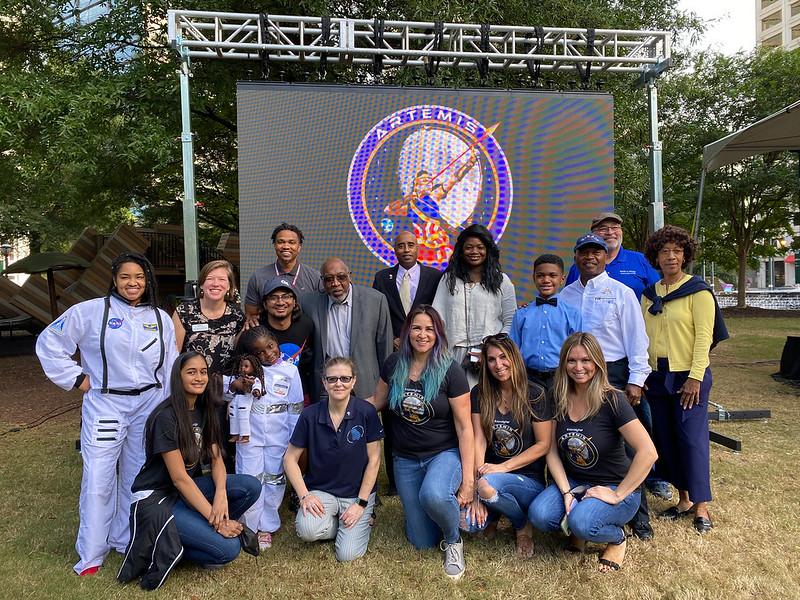
Space Day 2021 on Georgia Tech's Campus.
“We work with school systems and others to be visible, improve curricula, and make STEM more exciting and relevant to students. Not everyone grew up in a family environment as I did. So, they may not see others working in STEM and all of the different things they can do in the field. We’re providing exposure to students who may ultimately be world leaders. We try to advance what this nation needs, a more educated workforce that can compete. We aim to reduce some of the disparities that exist in educational systems. All of that is important to me.”
Stephen Ruffin
Expanding His Territory
In the Summer of 2022, Ruffin accepted a new role as the Associate Dean of Academic Affairs, at Georgia Tech Professional Education. In his new position, Ruffin serves as a thought leader and advocate for new and existing degrees, certificates, and other credential pathways and professional development programs for lifetime learning. He continues to teach and mentor in AE but will also give his wisdom, creativity, and advocacy to Professional Education.
The Next Generation
Just as Ruffin has expanded his role at Georgia Tech, AE has recently welcomed its first Black female professor, Sedina Tsikata. Before joining Georgia Tech, she worked as a plasma physics researcher with the French National Research Center for Scientific Research (CNRS) in France. She earned her undergraduate degree from MIT and her graduate degrees from Ecole Polytechnique, and her postdoctoral research in plasma propulsion was funded by the French Space Agency. Tsikata's research interests are in the fundamental nature and broad applications of magnetized plasmas, with a focus on the development of advanced optical diagnostics, analysis methods, control, and new plasma devices. Her research has, so far, been applied to the non-invasive characterization of different instabilities and electron features in plasma thrusters for space propulsion and other plasma environments. Tsikata’s new lab will focus on combining experimental, theoretical, and numerical approaches in the study of new plasma devices.
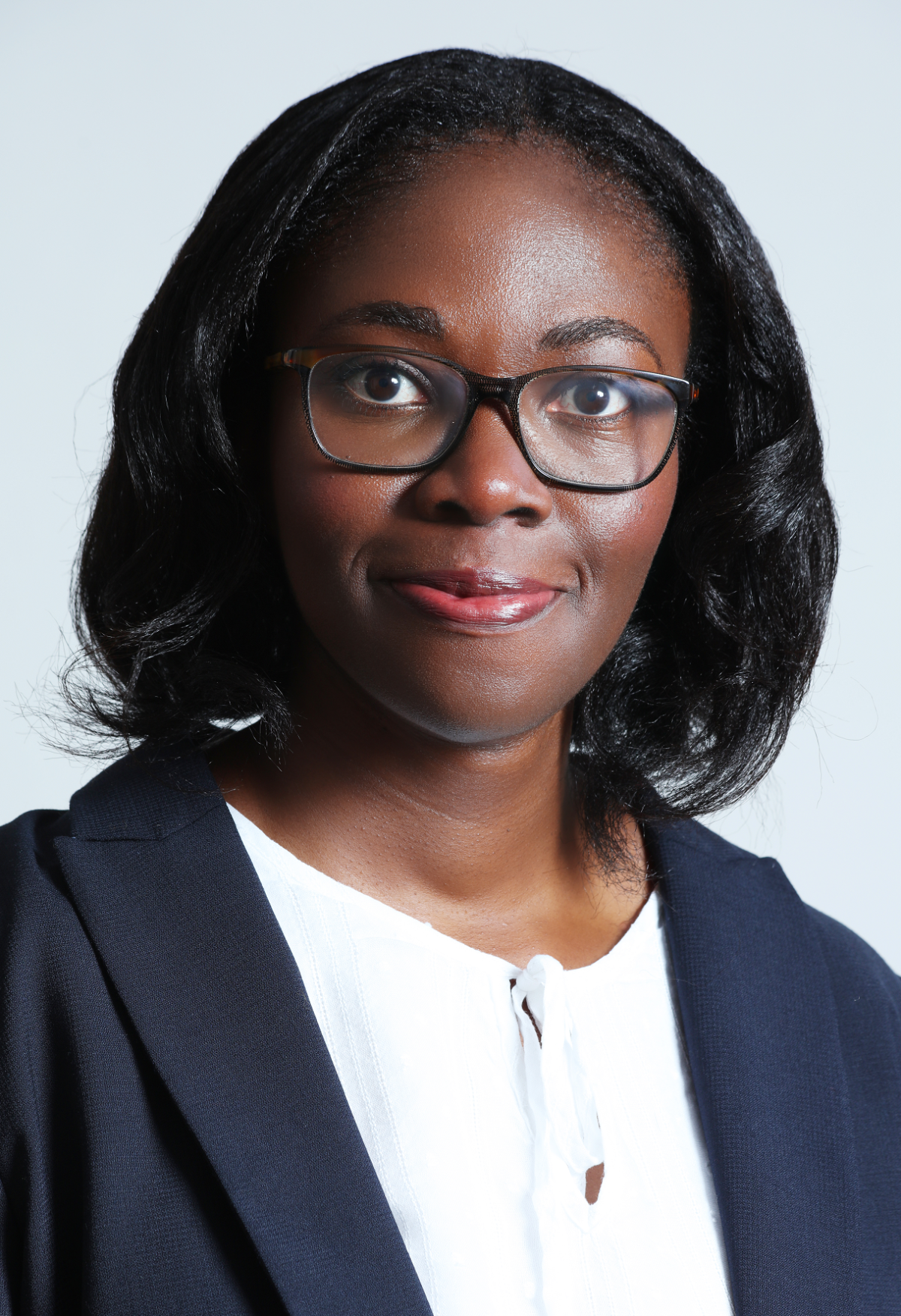
Sedina Tsikata,
Associate Professor, Lewis Professorship
(text and background only visible when logged in)
Related Stories
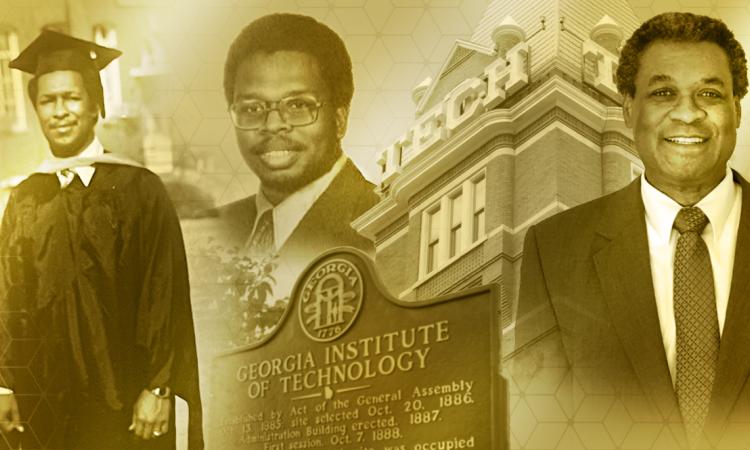
AE Delves into the Past to Showcase Its First Black Graduates
The Daniel Guggenheim School of Aerospace Engineering (AE) is proud to share the history of the first Black graduates, Berman J. Watts Jr. (BSAE 1973), Archie M. Stanley (MSAE 1979), and Bryan Fortson (Ph.D. AE 1991).
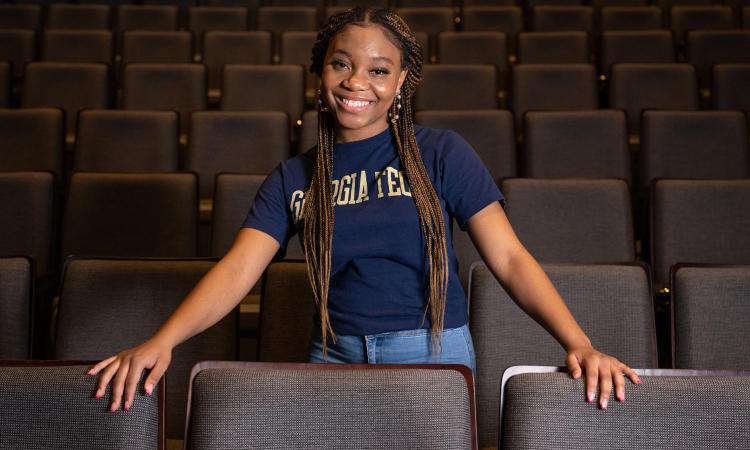
Black History Month: Atlanta Change-Makers
Meet some of the Georgia Tech engineers and others making a difference in Atlanta, adding to the city's rich history of achievements from the Black community.
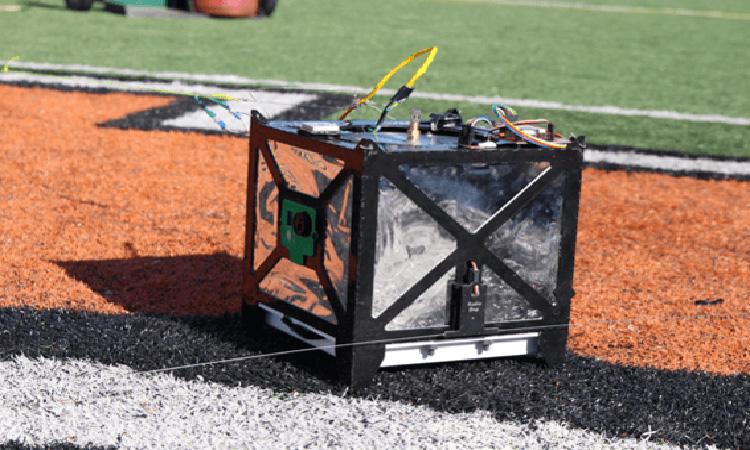
Georgia Space Grant Consortium: Inspiring NextGen Space Enthusiasts